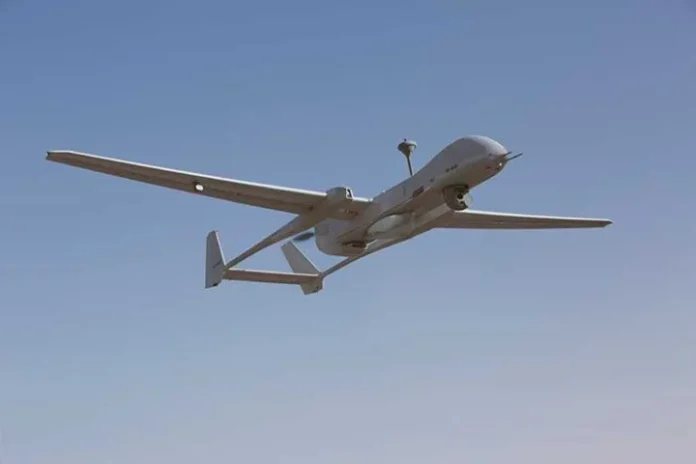Tel Aviv: Two types of UAVs made by Israel Aerospace Industries (IAI) are being operated extensively in the ongoing war with the Hamas terror organisation in Gaza. At dawn of October 7, 2023 when the fighting started, two types of UAVs, the Heron 1 and Heron TP were over Gaza.
The Israeli Air Force’s (IAF) UAV operators employed their sensors and communications to gain situational awareness for higher command levels. With onboard sensors, they collected information as quickly as possible, creating a situational picture to help the IAF command understand the situation and respond effectively.
The increased mission intensity was enabled by operating a force mix of tactical and heavier Medium Altitude Long Endurance (MALE) UAV platforms equipped with various sensors and target acquisition components. This enabled the IAF to operate in various missions.
The IAF has been operating the Heron family of UAV‘s for many years. These units are performing strategic, operational, and maritime surveillance missions over land and sea. The Heron 1 (Shoval) and the Heron TP (Eitan) are carrying payloads for surveillance, intelligence-gathering. The two types perform strategic, operational missions in day and night, including in cloudy and stormy weather.
Israeli sources say that the two types of the Heron made by IAI, play a pivotal role in Intelligence, Surveillance, and Reconnaissance (ISR) missions, operating various payloads simultaneously to gather real-time intelligence over vast areas.
“Their capacity to house specialised sensors enables functions such as reconnaissance, surveillance, and intelligence collection, including Synthetic Aperture Radar (SAR) and Electronic Intelligence (ELINT),” the sources added.
With an operational endurance of more than two days per mission, Heron 1 and Heron TP platforms currently perform tedious surveillance sorties, each spanning over days. Operators are replaced with fresh teams every few hours, thus maintaining high alert without leaving the target area on rotations.
Regulars and reservists, men and women, share the burden. Many squadron reservists are IAI employees tasked with developing, manufacturing, and operating the Heron family of UAV.
The management of such a complex system demands sophisticated control interfaces. IAI’s Unified Control System (UCS) streamlines operator functions and supports diverse platforms and payloads, enabling tactical deployments in varied operational settings.
The system also integrates autonomous mission features, enhancing situational awareness and supporting human operators in decision-making. The data collected by these UAS is efficiently disseminated to support real-time decision-making processes.
The extensive operational history of the Heron UAV, clocking over 21, 00,000 operational flight hours across multiple users, underscores their reliability and operational adaptability.
-The writer is an Israel-based freelance journalist. The views expressed are of the writer and do not necessarily reflect the views of Raksha Anirveda






